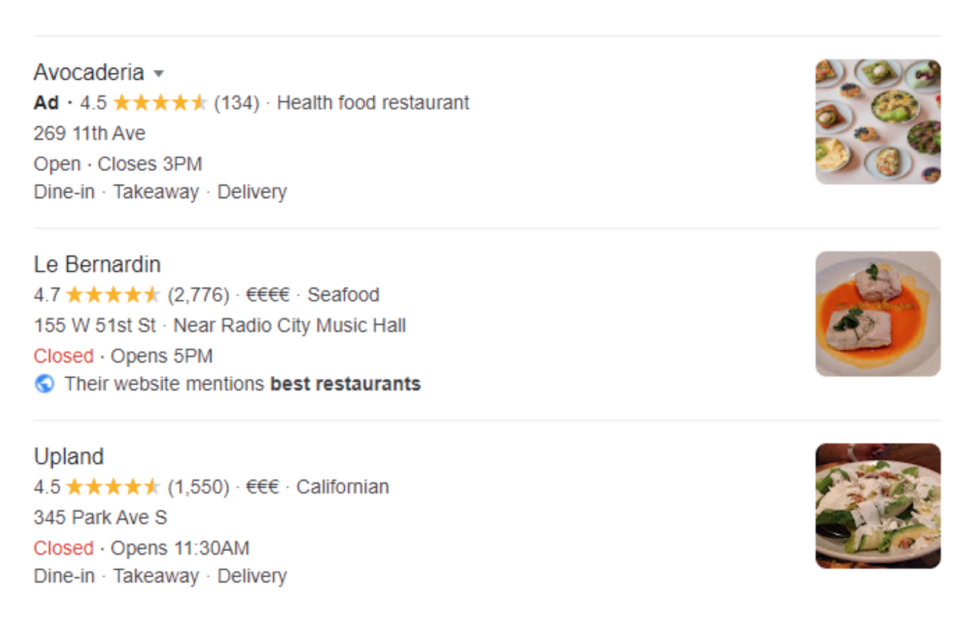A great restaurant starts with a great concept and a solid restaurant marketing plan.
A successful marketing strategy entails more than simply posting pretty Instagram photographs. However, contrary to common assumptions, you don’t need to spend much money on marketing to impact your restaurant significantly.
While it may not often appear so, a restaurant marketing plan is crucial to your establishment’s success. Although word-of-mouth can be effective, most people will never hear about your business unless you market it.
Even so, many restaurant owners and entrepreneurs ignore it entirely, which negatively impacts their business. Therefore, you should always strive to have an efficient restaurant marketing plan in place.
Before we go into the methods that synthesize a restaurant marketing plan, let’s understand what a marketing plan is.
What Is a Marketing Plan?
A marketing plan is a detailed report on how you intend to implement a marketing strategy to meet your business objectives.
It’s essentially a road map for how you’ll encourage clients to visit your business. When done on a digital scale, it’s referred to as a digital marketing strategy.
Your restaurant will be heard, seen, and appreciated by everyone you target and beyond, thanks to a well-crafted marketing strategy. Doesn’t it sound fantastic?
So, here’s the deal: it’s all about going where your customers are. What do they do with their time on the internet? What is the average age of your clients? You’ll have to do some research to find out which marketing methods work best for you.
First, identify your target customer. Then, decide how much money you’re willing to spend as you test new strategies. Finally, determine how you’ll measure success.
There will be trial and error with everything new, but the results can be highly beneficial.
5 Strategies to Include in Your Restaurant Marketing Plan
1. Create buyer personas
Knowing your customer is the key to successful marketing. This is crucial regardless of industry, the size of your business, or product.
Finding out your buyer personas isn’t all about demographics (age, gender, and where they’re from). You must also know your clients’ dining preferences and habits, their purchasing power, what they enjoy about your restaurant, and even how they learned about you.
The better you understand your target market, the more you’ll be able to tailor your strategy and marketing plan to suit them. Leverage the power of surveys, questionnaires, or even ask for some feedback to shape your buyer persona.
Read more: 25 Restaurant Survey Questions to Help You Gain Valuable Insight
Another excellent way to understand what your customers need is to take a look at your competitors. Try to find out what works for them and implement some elements to your marketing plan.
2. Engage your audience with email marketing
Email marketing is among the most effective tactics to reach out to your customers. Emails allow you to be as creative as you want, including as much text and visuals as you like to make it attractive to customers.
When it comes to nurturing customers, email marketing is the best tool. Begin by compiling a list of email recipients who have signed up for your newsletter.
For this kind of process, an email newsletter service is your best ally to make your life easier. Many online email marketing services can help you acquire these leads through sign-up forms and then nurture them with email marketing. When doing email marketing, keep track of your DMARC report in order to minimize the chances of getting scammed.
Offering discounts to your subscribers is a great strategy to convert them into paying customers. You can send out a newsletter that discusses the month’s highlights in addition to the regular offers and discounts.
Read more: 12 Restaurant Newsletter Ideas That Will Convert & Engage
You may also craft a welcome email for your subscribers to show your gratitude or encourage them to return to your restaurant.
Many people have the misconception that email marketing is no longer effective. If you play your cards well, though, this is far from the case.
When done successfully, email marketing will bring premium and quality clients to your business. When you include email marketing in your restaurant’s marketing plan, you may reach out to customers who have either signed up for email updates or visited your location.
You might also like: Restaurant Email Marketing Done Right: 12 Ideas to Woo Customers
Consider the frequency, the type of email (for example, a newsletter, a coupon offer, a re-engagement message, or a loyalty email), and whether your message has an impact on customers.
These tips above will help you stay in your clients’ minds and out of their spam folders.
3. Optimize your Google My Business listing
Ensure that you are visible to all potential customers looking for a place to eat by keeping your Google My Business page updated.
Bid on search terms that match your restaurant, and include several keywords on your website to maximize your chances of being viewed by a broader audience.
When someone searches for your restaurant on Google or Google Maps, they should learn everything about your business. Claim your GMB listing and fill it out as much as possible to get the most out of it.
What is the purpose behind this? A comprehensive listing makes your restaurant more appealing to diners looking for new places to eat, resulting in increased traffic.
Furthermore, when others search for related keywords, you’ll appear higher in the results. Google will recommend your restaurant over competitors with non-optimized listings since it has more context about your business.
Learn more: Top Benefits of Google My Business for Restaurants
To claim your listing, go to Google My Business and select the “Start now” option. Start filling out your profile after you’ve claimed and validated your business:
- Make sure your name, address, phone number, and other details are correct and up to date.
- Fill in your company’s category (Greek Restaurant, Asian restaurant, etc.)
- Let customers know whether your business has free Wi-Fi, outdoor seating, and other perks.
- Add your menu.
- Add a link to where people can order food on your website.
- Include images that show off your place.
- Include videos.
- Respond to customer feedback and questions.
Check out Google’s guide to learn more about how to optimize Google My Business listing.
4. Create social media channels
Nowadays, social media is a vital element of your restaurant marketing plan. Many people use Facebook, Instagram, and other social media sites to look for restaurants and dining options.
As a result, it’s in your best interests to set up your social media profiles and publish on them frequently. If feasible, post once a day; if not, post at least twice or three times a week.
You can share photos and videos from:
- your personnel at work
- behind the scenes
- updates about the restaurant
- specific menu dishes
- user-generated content and reviews from your consumers
It’s crucial to figure out which sites your clients spend the most time on so you can reach them where they are already. Experimenting with several platforms is beneficial because each channel provides a unique approach to communicating with visitors.
You might also like: Ideas & Benefits Of Restaurant Digital Signage for Better Customer Experience
Facebook is the most successful social media marketing channel for reaching out to new customers and interacting with existing customers for repeat business. Your restaurant’s business will benefit significantly from having a Facebook page.
Driving organic engagement on Facebook is becoming more difficult by the day since the organic reach of Facebook pages has been dramatically restricted.
The algorithm is frequently changing to encourage Facebook advertisements and post boosts, and organic reach is reduced. However, you may still use these strategies to keep your restaurant’s Facebook page healthy in terms of organic traffic.
Facebook allows users to post in various formats, including long-form text posts, link sharing, photographs, videos, and reviews.
Download our video marketing statistics infographic to understand more about the importance of video marketing for restaurants.
You may also use a chatbot on Facebook to grow your marketing plan and reply to simple client questions without having to hire someone to watch your messages constantly.
Here are some Facebook marketing ideas for restaurants to try out:
- The first step is to set up a Facebook page and post often. To establish your restaurant’s reputation for providing authoritative content, you can post recipes or cooking instructions from your chefs or promote exciting news.
- You should also promote the events that take place at your restaurant. Remember to make an event on your Facebook page, post it, and invite as many people as you can.
- You may also use Facebook to attract and retain clients by running Facebook contests and giveaways. For example, you may urge your clients to check-in at your restaurant or take a selfie with their favorite dish from your menu and post it on Facebook, tagging your business.
- Targeted Facebook advertising has been known to bring in much business, especially for a new restaurant. You can choose your Target Audience depending on their demographics, interests, and other factors. You may also use your CRM to submit your customer’s email list for better targeting.
Read more: 10 Facebook Ad Targeting Tips to Boost Restaurant Conversions
Instagram is the optimal social media channel for enticing clients with food photos and videos. To keep yourself fresh in the minds of your followers, you must post regularly and have a professional Instagram grid.
Hiring a professional photographer to capture high-quality photographs of your cuisine and your restaurant’s interior décor is a fantastic idea to get ahead of the competition.
Apart from that, when your customers or followers post a photo of your restaurant on Instagram, share it on your page and thank them for their interest.
Another powerful feature of Instagram is stories. Instagram stories disappear after 24 hours. They are a quick way to communicate with your audience less formally, giving your Instagram feed a more personal vibe. Ultimately, this helps clients engage with your brand.
You can also utilize hashtags on Instagram to increase your discoverability. You should come up with a hashtag that is specific to your restaurant. This will give you a distinct Instagram identity and help with your branding.
You may also encourage consumers to use the hashtag to tag your business in their posts. All of these will increase your reach and bring you closer to your target market.
Learn more: Restaurant Instagram Marketing Ideas That Will Help You Increase Sales
5. Leverage influencer marketing
To take your restaurant marketing plan to the next level, take advantage of influencers. Influencer marketing is becoming increasingly popular. According to data, over 68% of US marketers employ influencers in their marketing efforts.
As a result, you can incorporate influencer marketing into your restaurant’s marketing strategy for success. By building credibility, you will be able to expand your reach. The influencer will act as a thought leader and will guide their followers to your restaurant.
You can select an influencer and invite them to dine at your restaurant; they can then share it on their social media platforms, and you can do the same on yours.
Because influencers have a large following, they can help you expand the reach of your restaurant. A sense of trust will develop among the audience due to influencer marketing. Consequently, your restaurant will see an increase in foot traffic.
Read more: Restaurant Influencer Marketing Guide: How to Do It and Why
The Takeaway
Developing a restaurant marketing plan for your business is a straightforward yet vital step. It protects you from future obstacles when you discover that your restaurant isn’t functioning as well as you had hoped.
Implementing the strategies outlined above will assist you in creating a solid marketing plan for your restaurant that will guarantee a successful journey.
This article is a guest post.
Author bio: Alex is a content writer at Moosend. He leaped faith in the digital marketing world from an architecture background and has never looked back. You will find him traveling in places around the world in his free time.



